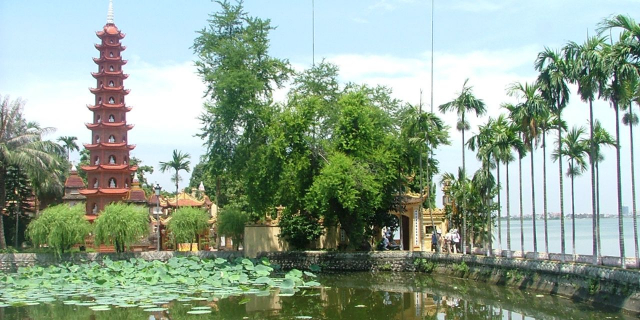Sa Pa
Sa Pa (, also written as Sapa) is a district-level town of Lào Cai Province in the Northwest region of Vietnam. As of 2018, the town had a population of 61,498. The town covers an area of 677 km2. The town capital lies at Sa Pa ward. It is one of the main market towns in the area, where several ethnic minority groups such as Hmong, Dao (Yao), Giáy, Xa Pho, and Tay live.
 Ancient rock engravings. The old stone area of Sapa is listed as a tentative site for UNESCO world heritage nomination.
Ancient rock engravings. The old stone area of Sapa is listed as a tentative site for UNESCO world heritage nomination.Sa Pa was a frontier and market and capital of former Sa Pa District in Lào Cai Province in north-west Vietnam. It was first inhabited by people about whom nothing is known. They left in the entire valley hundreds of petroglyphs, mostly composed of lines, which experts think date from the 15th century and represent local cadastres. Sa Pa is home to more than 200 pieces of boulders with ancient engravings. The "Area of Old Carved Stone in Sapa" has been in the UNESCO tentative list since 1997.[1] Then came the highland minorities of the Hmong, Yao (Dao), Giáy, Pho Lu, and Tày peoples, still present in Sa Pa district today. The Kinh (lowland Vietnamese) never originally colonised this highest of Việt Nam's valleys, which lies in the shadow of Phan-Xi-Pǎng (Fansipan, 3143 m), the highest peak in the country.[2]
 The Catholic church in Sa Pa, built in stone in 1930
The Catholic church in Sa Pa, built in stone in 1930It was only when the French arrived in highland Tonkin in the late 1880s that Sa Pa, the name of the Hmong hamlet, began to appear on the national map. Near to the now Sa Pa townlet is "Sa Pả commune", which shows the origin in Hmong language of the location name.[a] Sa Pa is pronounced with "S" almost as soft as the "Ch" sound of French, "Sh" in English, or "S" in standard Vietnamese, so Chapa as the French called it.
In the following decade, the future site of Sa Pa township started to see military parties as well as missionaries from the Société des Missions Etrangères de Paris (MEP) visit.[4] The French military marched from the Red River Delta into the northern mountainous regions as part of Tonkin's ‘pacification’. In 1894-96 the border between China and Tonkin was formally agreed upon and the Sa Pa area, just to the south of this frontier, was placed under French authority. From 1891 the entire Lào Cai region, including Sa Pa, came under direct colonial military administration so as to curtail banditry and political resistance on the sensitive northern frontier.[5]
The first permanent French civilian resident arrived in Sa Pa in 1909. With its attractive continental climate, health authorities believed the site had potential. By 1912 a military sanatorium for ailing officers had been erected along with a fully fledged military garrison. Then, from the 1920s onwards, several wealthy professionals with enough financial capital also had a number of private villas built in the vicinity.
At the end of the Second World War a long period of hostilities began in Tonkin that was to last until 1954. In the process, nearly all of the 200 or so colonial buildings in or around Sa Pa were destroyed, either by Việt Minh sympathisers in the late 1940s, or, in the early 1950s by French air raids. The vast majority of the Viet population fled for their lives, and the former township entered a prolonged sleep.
In the early 1960s, thanks to the New Economic Zones migration scheme set up by the new Socialist regime, new inhabitants from the lowlands started to migrate to the region.
The short 1979 occupation of the northern border region by Chinese troops had little impact on Sa Pa town, but did force the Kinh (lowland Vietnamese) population out for a month.
In 1993 the last obstacle to Sa Pa's full rebirth as a prominent holiday destination was lifted as the decision was made to open the door fully to international tourism. Sa Pa was back on the tourist trail again, this time for a newly emerging local elite tourist crowd, as well as international tourists.[6]
Sa Pa is now in full economic boom, mainly from the thousands of tourists who come every year to walk the hundreds of miles of trekking trails between and around the villages of Dao villages of Ta Van and Ta Phin.
In 2006, the Chairman of The People's Committee of Sa Pa Province was elected to The Communist Party Central Committee as the youngest ever member (born in 1973).
Cite error: There are <ref group=lower-alpha> tags or {{efn}} templates on this page, but the references will not show without a {{reflist|group=lower-alpha}} template or {{notelist}} template (see the help page).




















![[Tycho] - CC BY-SA 3.0](/sites/default/files/styles/640x320/public/pla/images/2020-12/1280px-H%C3%B2a_B%C3%ACnh_Province%2C_Kim_B%C3%B4i_District.jpg?h=19cfe918&itok=VDjAzlTZ)














Add new comment